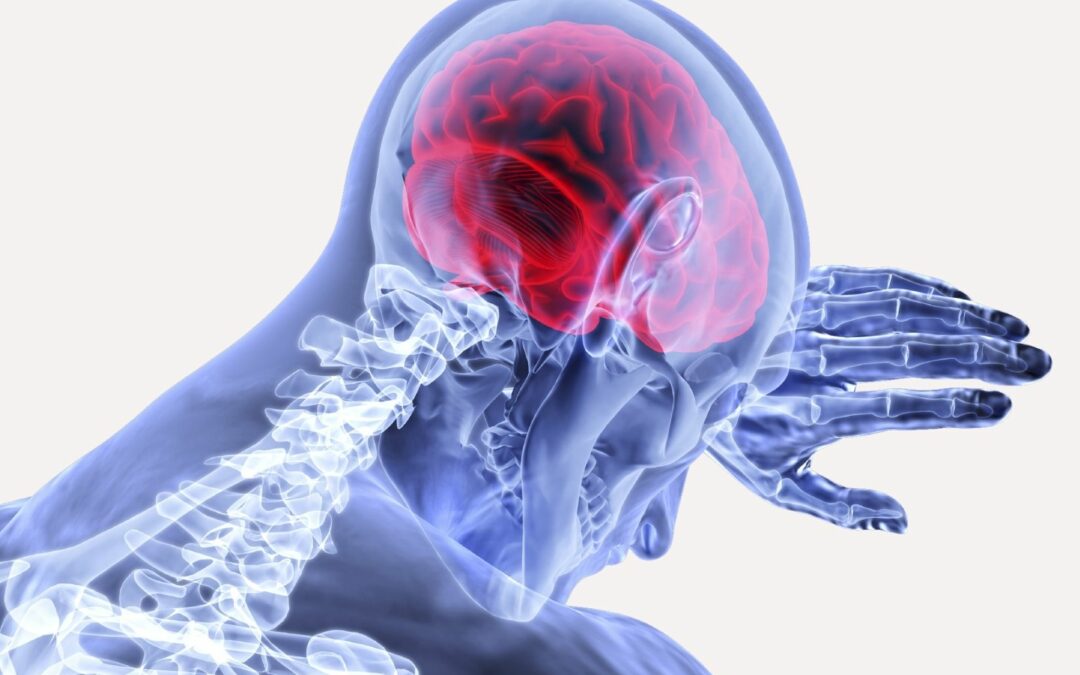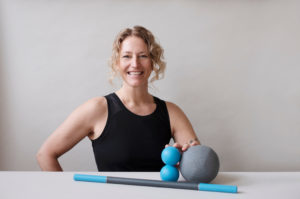Let’s continue our talk on tension. In my last blog post, I discussed tension that gets stuck in the body. Check it out for some great info. Here, I’m going to discuss tension that begins in your brain. Let’s go!
Last week, we were talking about tension that gets like stuck in the body, stuck in the muscles, and how tension is trigger points in our muscles and tissues. Now, I want to step back a little and discuss tension that begins in your brain and how that affects your muscles and soft tissues. There are a few different angles to look at when we look at tension in our bodies as a result of tension in the brain. Of course, stress is a piece of that puzzle. Stress creates tension in our tissues. We’re also going to have another whole post about stress and the psoas, stress and back pain, and some other pieces. Stay tuned for that.
Stress and tension can both begin in the brain. We respond to these triggers with reflexes and protections.
These reflexes can lead to tension that gets stuck and locked down in your muscles and can wreak havoc on your joints, tendons, and soft tissues. Certain muscles in our bodies are structural stabilizers. For example, the scalenes help stabilize the neck. The quadratus lumborum and the psoas are stabilizers for the lumbar spine.
The gluteus minimus and medius stabilize the femurs in the socket. Rotator cuff muscles stabilize the humerus in the socket.
Stabilizing Muscles & Reflexes
You see, our structural muscles aren’t there just for movement. They have another job to stabilize the structure of the body and to protect you from harming your joints. However, we can stress this system out. Let’s say you’re walking and you slip and fall down on one side, maybe on your hip. When that impact happens, your first response is to feel startled. That startle activates your nervous systems automatic response to danger. Without thinking, your body activates some reflexive contractions, holding in all of the muscles that flex your body. Basically you tense up, maybe gasp, too.
Then, when you have the impact, the muscles that stabilize your neck, your shoulders, your hips, your low back, your knees, your ankles, they contract to try to protect you, to try to keep you from breaking your vertebrae or damaging your shoulder joint or wreaking havoc in the knee or the femur and having damage in the hip joint. Here’s an example. In a car car accident, you get hit by a car and the head gets jolted. It can lead to a concussion. Sometimes there are trigger points in the neck muscles that can seem like you have a concussion and maybe you don’t. The neck and low back stabilizers are going to engage a lot in this moment.
Here’s another example. Let’s say you slip and fall. Depending on how you fall, the muscles that stabilize the femur, the low back, the neck, or the shoulder may reflexively contract to protect you. This is why we’re sore after we have an accident or we get injured. It’s not even necessarily where you were hit, where you fell or where the blow was, but it’s where that tension in the body begins when the body wants to protect itself. The nervous system sends a message into those muscles and tissues saying, “Hey, contract. We got to protect the structure. We’re going down. We got to protect the structure!”
When things get stuck
The automatic response described above can be a reflex that even skips the brain all together. The message is sent to the nervous system, the spinal cord, and then back to the muscles. For example, you put your finger on a hot stove. If the message had to go all of the way up to the brain, get processed, and then send a message down to pull back, you’d actually burn your finger. What actually happens is that it just goes up to the nervous system and spinal cord, then comes back down. This response is super fast. Over time, some of these tensional patterns get stuck in your brain. That’s when those old injuries come back.
This becomes problematic over time if we don’t actually release that tension. You see, when we fall, get hit, or have an accident or an injury, the muscles that stabilize the structure contract and they contract kind of haphazardly because it’s a sudden action. Now, sometimes that tension stays stuck in the muscle and it becomes trigger points. Over time, these trigger points can grown and get worse.
Now this is really important. When you have an accident, fall, crash, or injury, the contraction that happens at the time of that accident becomes what I have called a “tensional recipe” in your body. Your body learns, “Oh, when there’s certain conditions, I contract these muscles all together.” Then, the brain files this information away for another time. This tensional recipe, stored in the brain, can come back later in life. Let’s say, you had a major injury 10 years ago. Then last week, you slipped in the kitchen. It wasn’t a big deal, but you start to feel some of that old contraction happen. Maybe over a period of a day or so, or all of a sudden, all of the parts that contracted the first time you were injured go and contort back into that position of the time of the original fall. You think, “Oh, there’s my old injury. My old injury is back.”
Well, this is right and wrong. Yes, you old injury retuned in the sense that your brain has pulled that recipe card out of the shadows and contracted in that same pattern all of the things that it did that first time. This is why we can feel an injury that we felt years and years ago come back. But really, the old injury hasn’t returned, it’s that your brain remembers what it did when it was trying to protect you during that original fall or injury.
That is a reflexive contraction. These contractions lodge in your muscles like any other trigger point that can happen from overuse, repetitive use injury, or all of these other ways that we get stuck in tension. We get to the same results, which are trigger points. Trigger points are focal points of tension in the muscles. Focal points of tension in your muscles can cause pain, sensation, nerve-like symptoms, dysfunction, loss of range of motion. Often, you could feel it in the joints and think you might have a joint-related issue, but it might just be imbalanced pull on that joint because of tension that’s stuck in the muscles.
So, what do you do? You’re having a resurfacing of an old injury or a deep, nagging ache. What do you do? Well, you go see a trigger point therapist. You do your deep breathing and belly-breathing exercises. An important piece during these moments is to KEEP MOVING! Don’t stop moving. If old tension comes up in your body again, don’t stop moving. That’s unfortunately what most people do. That actually drives the tension deeper into your nervous system. Your body then begins to protect the tension. If you get immobile, your body will start to protect the tension itself, and that is never good.
Self Trigger Point Release
Finally, one of the best ways to release old tensional patterns is to work on your own trigger points. Self trigger point release work includes using foam rollers, massage balls and other self-trigger point tools to do the healing work on your own body. Self-trigger point release can be pretty easy if you know the right places to go in your muscles. You can do it yourself, and if feels amazing when you find the tensional spots you have really needed to release.
I share dozens of Self trigger point release videos on my youtube channel, and am always offering course through my website to help you end your tensional patterns for good. Check them out. I hope this post was helpful.
Thanks




